
See
Calatogue

Environmental object "Sunset Watcher"

Nature trail Ķirezers

White Dune

Loja river walking path and cliffs

Auguste garden of inspiration
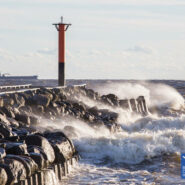
Baltic coastal hiking 27. day Saulkrasti - Lauči
The Gate To The Rocky Seashore Of Vidzeme
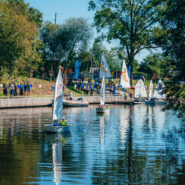
Aģe river promenade and marina
Aģe, arī Skultes upe, ir Vidzemes piekrastes upe Siguldas, Limbažu un Saulkrastu novados. Iztek no Aģes ezera, uzņem arī Aijažu ezera ūdeņus. Pie Skultes ostas un Aģes ietekas jūrā izveidota promenāde, kur doties pastaigās. Kā arī izveidota jahtu piestātne.

Jūrtakas pārgājiena maršruta tūristu brošūra un karte
Brošūra iepazīstina ar Baltijas jūras piekrastes pārgājienu maršrutu, Baltijas jūras krastu starp Rīgu un Tallinu. 1200 km garais pārgājiena maršruts ir daļa no Eiropas garo distanču kājnieku tūrisma maršruta tīkla E9.

The Murjāņi ancient burial ground
The Murjāņi ancient burial ground, located in Sēja Parish of Saulkrasti Municipality, is testimony to the fact that Gauja Livs lived in the territory of Sēja in the 11th to 13th century. This is evident from the approximately 60 ancient burial mounds of varying sizes spread over several kilometres.

White dune
One of the most beautiful dunes of its kind in Latvia with great sight to the coast of Baltic Sea. The 18 metre high dune on the right bank of the River Inčupe where it flows into the Baltic Sea is a great spot to look out over the Gulf of Riga. Geographically, the White Dune is a sandstone layer, formed 405–350 million years ago. The dune also appears in the historical feature films of the Riga Motion Pictures Studio "Kā gulbji balti padebeši iet" (White clouds are passing like swans) (1956) and "Nauris" (1957).

Brankši Mill
Kārlis Vītols and his son Mārtiņš “Brankšs” started building the mill in 1890. The mill was powered by a single underflow watercourse. In the beginning, there was one flour and one groat mill. The lake of the mill was about 6 ha large, with a drop of 4 m. The maximum flow rate of the free-flood gates was 20 m3 per second. Not many people know that Brankši Mill produced the best groat in Latvia at that time.
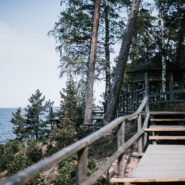
Sunset trail
If you wish to enjoy the benefits of a healthy walk and the fresh sea air, take the 3.6 km long forest trail that stretches alongside the sea coast from the White Dune to Sun Bridge.
Saulkrasti beach
Saulkrasti Beach is a 17 km long natural masterpiece.Witness the rich diversity from the singing sand in Lilaste to the stony seashore in Zvejniekciems.

Zvejniekciems and Skulte port
In the 19th century, on the seacoast of Skulte, a small village was formed populated mostly by fishermen. The name of the village also attributes to this profession (in Latvian "Zvejniekciems" means "fishermen's village")

Culture Club "Zvejniekciems"
It was designed by the excellent architect Marta Staņa (1913–1972) in the mid-20th century for the use of the collective farm "Zvejnieks". The architect worked in a functionalism style (the Dailes Theatre in Riga is another of her creations).

Sēja manor and water tower
Sēja Manor Castle is a turn-of-the-century building from the 18th to the 19th century. Between 1883 and 1885, the castle was rebuilt with neo-Gothic decoration. In 1903, a water tower was built in the park; it is one of the most expressive neo-Gothic water towers in Latvian manor architecture. It has survived to the present day and is currently the oldest in Latvia.
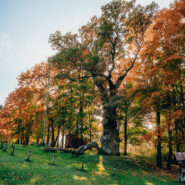
Sēja grand oak
Sējas grand oak is one of the largest oaks in Latvia. It grows on the edge of the Sēja manor park. The circumference of the trunk is 9.1 m and it has a well-developed 24x6 m crown, the height of the tree is 23.5 m. It is the second largest oak in Latvia and the fourth largest in the Baltics. About 450 years old.

Nature park "Piejūra "
Admirers of untouched nature will appreciate the sights of the Vidzeme coastline from Lilaste to the White Dune in Saulkrasti. The natural environment, protected plants and a once traveling sand dune are preserved in the territory. Have you ever wished to swim in the sea naked as the day you were born? Visit one of the oldest nudist beaches in Latvia that has remained popular for several decades, and allow yourself to relax in the soothing sand, water and sunlight!

Saulkrasti Forest Park

Nature design park
n White Dune are set up following Nature Design objects: "Entrance gates" which symbolizes White Dune and its fragility. On the wall of this object an information about White Dune are exposed. "Frīda the Hedgehog" and "Fredis the Rabbit"- both objects invite people to be polite when visiting nature sites and not to throw rubbish on the ground as well as to be quiet in the forest.
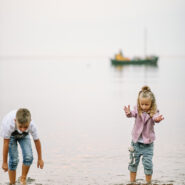
Seaside Park and Blue Flag Bathing Spot "Centre"
Combine a relaxing day on the beach with healthy, athletic activities!
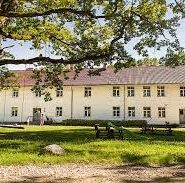
Pēterupe Pastorage
The Pēterupe Pastorage can be found in writing starting from the late 17th century. The park and buildings of the estate have partly been preserved, just like the linden avenue planted in 1879 by the priest Jānis Neilands (at the end of Smilšu Street) and the grand oak planted by Johann Wilhelm Knieriem in 1869.
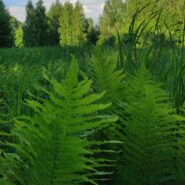
Dzelve-Kronis Swamp
The nature reserve Dzelve-Kronis Swamp is a Natura 2000 territory. It was granted the status of a Specially Protected Nature Area in 1999. The area of the site is 2133 ha.
The swamp is characterised by a high diversity of ornithofauna and biotopes. It is a breeding site for many rare bird species. The swamp contains complexes of small lakes where large numbers of geese and cranes reside after breeding and during migration. A larger lake is located in the southern part where a colony of silver gulls has been observed.
Protected Landscape Area “Ādaži”
Parts of the Rampa and Bitenieki swamp are located in the protected landscape area “Ādaži”. Peculiar vegetation has developed in the swamps where the grass and transitional swamp fragments alternate with dry heathland. Dry heathlands are one of the greatest assets in the protected landscape area. Altogether they cover about 1040 ha and are the largest site of this biotope in Latvia.
The heathland in the landscape area supports several plant species of Latvian and EU importance, such as wood henbit, grass sallow, and heath rush
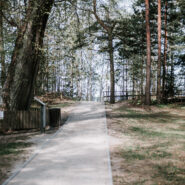
Catherine's lindens
In 1764 Catherine the Great (empress of Russia 1762–1796) honored Estonia and Vidzeme with a visit while traveling from St. Petersburg to Riga.

Sēja school and school history museum
Construction of the school began in 1914 with funds donated by the inhabitants of the parish. Sēja school was consecrated on 26 November 1922. It was created by combining the Suliņas and Vēži schools.
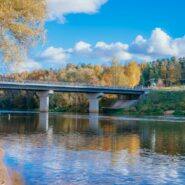
Gauja Bridge
Gauja bridge is located on the border of Murjāņi. The bridge has an extensive history as it was opened in 1920 and used to be the longest truss bridge in the history of Latvia (166.4 m). Repaired many times, the bridge was functional until 1941 when it was blown up by the USSR military; it was reconstructed in 1948, but the reinforced concrete bridge opened in 1961 was reconstructed in 2008.
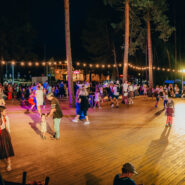
Sun Square
Sun Square is located at the very centre of the town and gathers people for outdoor concerts and films.
Memorial site for Finnish pilots
On 23 April 1943 four Finnish soldiers – Urho Jääskeläinen, Lauri Suhonen, Aimo Valkeeniemi and Erkki Horma – crashed with the bomber Junkers, in Saulkrasti territory on their way from Germany to Finland. Following the tradition of Finnish war pilots a memorial plaque was erected at the place of the air crash.

Roman Catholic Church of Divine Grace
In 1998 the Roman Catholic Church of Divine Grace, able to hold 300 people, was built and consecrated next to the River Ķīšupe, close to the park and an open stage; it was a project of the architect Jānis Šrēders. The Christ in the altar painting is portrayed by the artist Ēriks Pudzēns as seen by Sister Faustina on 22 February 1931 in a Polish monastery.

Saulkrasti beach
Saulkrasti Beach is a 17 km long natural masterpiece.Witness the rich diversity from the singing sand in Lilaste to the stony seashore in Zvejniekciems.
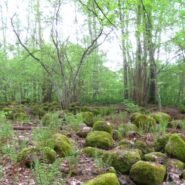
Stēdere Ancient Burial Ground
Stēdere ancient burial ground, similarly to the Murjāņi ancient burial ground, is testimony to the Liv life in this area in the 10th to 13th century. Archaeological research has uncovered four 10th to 12th century Liv ancient burial mounds. The mounds are spherical, medium-sized: 9-10 metres across, and 1.2-1.4 m high.
The Stēdere ancient burial ground was included on the list of archaeological monuments in 1998.

Neibāde Park and The Monument for Neibāde Seaside Resort founder
Along with the creation of Neibāde (‘Neubad', German for ‘the new bathing place') spa in 1823, the care for the guests' recreation began as well.
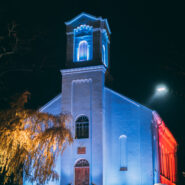
Saulkrasti (Pēterupe) Lutheran Church
Pēterupe Church,first built in 1641. The current building is already the fourth church in this place, built in 1856.
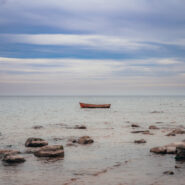
Stony seaside of Zvejniekciems
Between Skulte Port and Saulkrasti Beach is the stony seaside of Zvejniekciems. It is a place for creative spirits, where you can draw inspiration from the reflections of summer, listen to the soft whispering of pine trees in autumn, or be alone with your thoughts in the icy air of winter or the hopeful spring.
